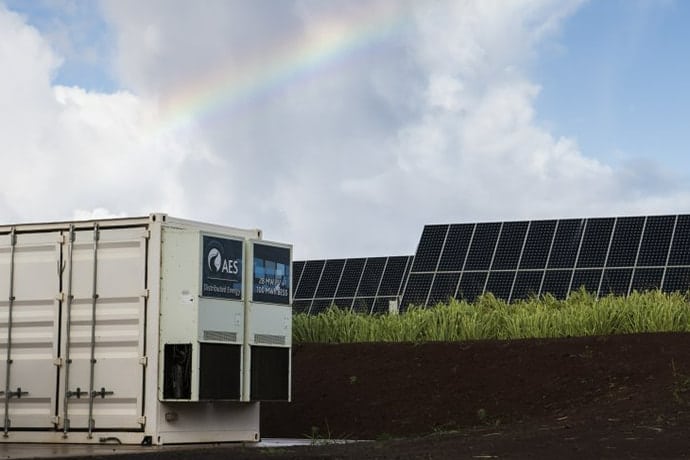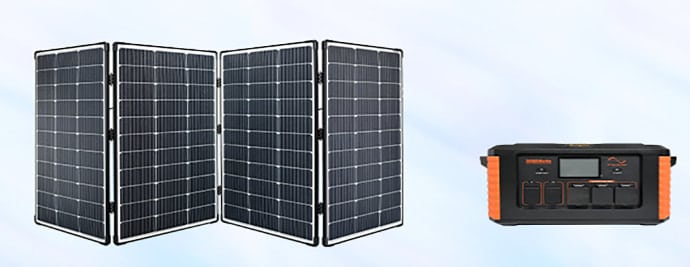Solar energy is a valuable and abundant renewable resource that holds great potential for meeting our energy needs. However, one of the challenges associated with solar energy is its intermittent nature. The sun doesn’t shine consistently, and energy production from solar panels fluctuates throughout the day. This is where energy storage comes into play. Storing solar energy allows us to use it even when the sun isn’t shining.
How is solar energy stored?
1.1 Batteries
One of the most common methods of storing solar energy is through the use of batteries. Solar panels generate direct current (DC) electricity, which can be stored in batteries for later use. Batteries release energy when the demand is higher or when the sun isn’t available. The stored energy can be used to power homes, businesses, or even electric vehicles. Lithium-ion batteries are commonly used for solar energy storage due to their high energy density and efficiency.
1.2 Thermal energy
Solar thermal energy can also be stored as heat. Solar thermal systems use solar collectors to capture the sun’s heat and transfer it to a thermal storage medium such as water or molten salt. This stored heat can then be used for various applications, including space heating, water heating, or even electricity generation through steam turbines. Thermal energy storage allows for more efficient and continuous utilization of solar energy, especially in colder climates or during non-sunny periods.
1.3 Machinery
Another way to store solar energy is through mechanical systems such as flywheels or compressed air energy storage (CAES). Flywheels store energy in the form of rotational motion, which can be converted back into electricity when needed. CAES systems store compressed air in underground caverns or pressurized vessels and release it to drive turbines for electricity generation. These mechanical storage methods offer unique advantages in terms of scalability and grid-level energy storage.

The best way to store solar energy
2.1 Commercial solar energy storage
Commercial-scale solar energy storage systems are designed to handle larger capacities and meet the energy demands of industries, businesses, and utility-scale applications. These systems often incorporate advanced battery technologies, such as lithium-ion batteries, flow batteries, or even emerging technologies like solid-state batteries. Commercial storage solutions offer high power and capacity capabilities, allowing for grid stabilization, peak shaving, and demand management.
2.2 Domestic solar energy storage
On the other hand, domestic-scale solar energy storage is tailored for residential use. Homeowners can install battery storage systems alongside their solar panels to maximize self-consumption and reduce reliance on the grid. These systems typically use lithium-ion batteries or other residential-specific battery technologies. Domestic storage solutions offer benefits like energy independence, backup power during outages, and potential cost savings by utilizing stored energy during peak rate periods.
Portable solar panels can also be used for home solar energy storage. Portable solar panels can meet the family’s need for electricity for outdoor travel, greatly extending the family’s travel time. The panels can charge cell phones, tablets, fans, and other electronic devices.
How to store solar energy: Frequently Asked Questions
Q: Can I store excess solar energy in the grid?
A: Some regions allow for grid-tied solar systems to export excess energy to the grid in exchange for credits or compensation. However, the ability to store energy directly in the grid depends on local regulations and grid infrastructure.
Q: What is the lifespan of solar energy storage systems?
A: The lifespan of storage systems varies depending on the technology and usage patterns. Lithium-ion batteries commonly used for solar energy storage typically have a lifespan of 10-15 years or more, depending on the depth of discharge and maintenance.
Q: Is it possible to use multiple storage technologies together?
A: Yes, hybrid storage systems that combine different storage technologies, such as batteries and thermal storage, can be implemented to optimize energy storage and cater to specific energy requirements. By integrating multiple storage technologies, it becomes possible to leverage the advantages of each system and create a more robust and flexible energy storage solution.
Q: Are there any limitations or challenges with solar energy storage?
A: While solar energy storage offers numerous benefits, there are some challenges to consider. These include the initial cost of storage systems, the efficiency of energy conversion and storage processes, and the environmental impact of certain storage technologies. Additionally, the scalability of storage systems to meet increasing energy demands is an ongoing consideration.
Conclusion
Understanding how solar energy is stored and the best practices for solar energy storage is crucial for harnessing the full potential of solar power. Whether it’s through batteries, thermal storage, or mechanical systems, the ability to store and utilize solar energy efficiently brings us closer to a sustainable and clean energy future.
Article from: https://www.sungoldsolar.com/
Your most sincere solar partner: Sungold


























